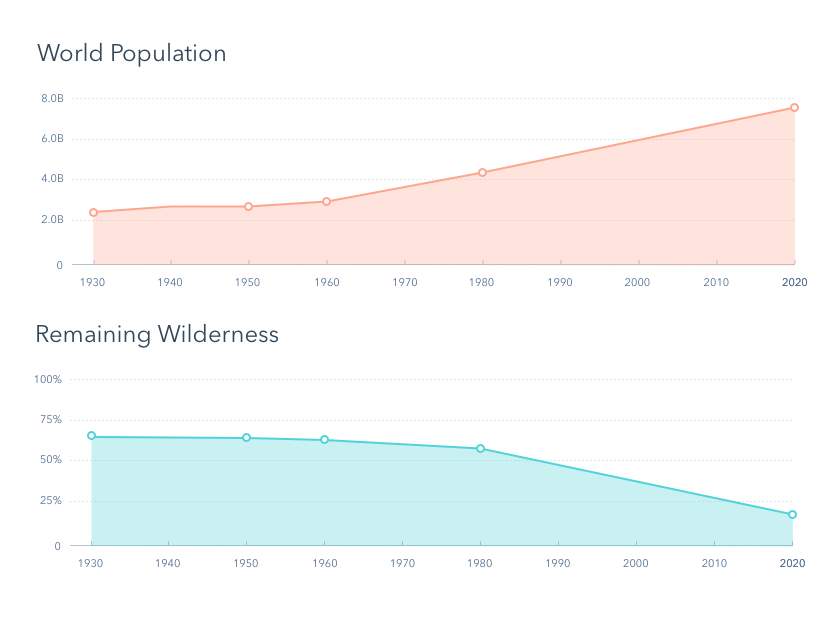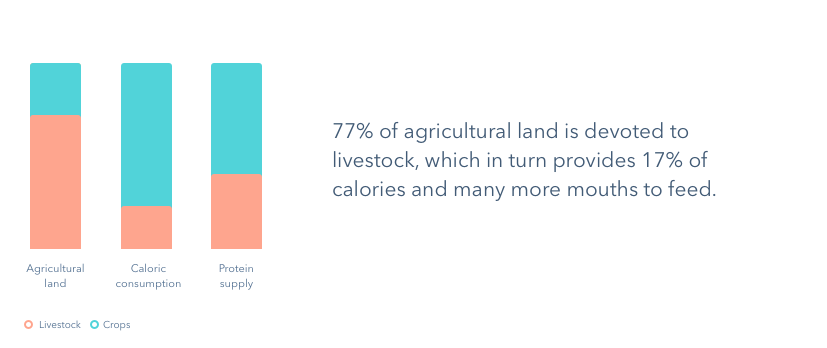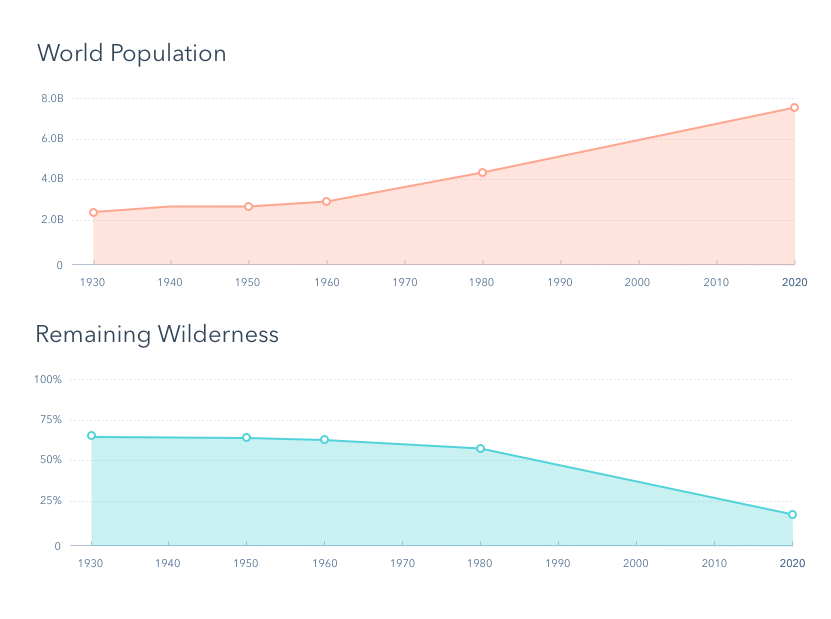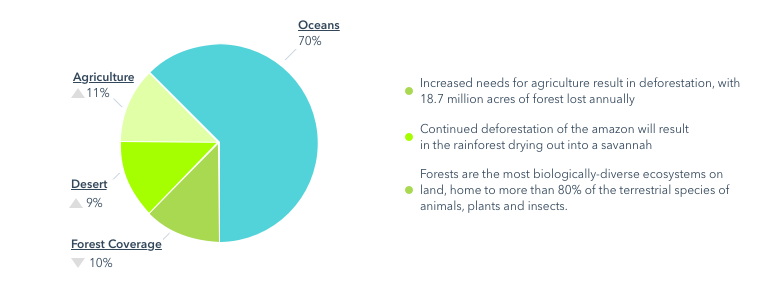Posted by Chieftain Trees ● Oct 11, 2020 5:11:44 PM
The UN sustainable development goals are a group of 17 targeted goals agreed to by all members of the united nations and aiming to achieve a sustainable and brighter future for humanity and all life on Earth, with the current goals having a specific target of 2030.
In this article we will tell you what sustainable development is, what these UN sdg goals are and hopefully, how you can help to save the planet. While this article will cover the broader view of these goals, we will be diving into each of the 17 in depth over a series of posts.
Sustainable Development
Sustainability is essentially a method of creating a perpetual supply of resources with no negative impact on the natural world.
Sustainable Development is how human society grows and betters itself in harmony with existing ecosystems and natural processes, in a way that has no negative impact on the natural world.
Sustainability Science is the study of sustainable development and environmental science, with a focus on the present generations challenges and responsibilities to restore, maintain and improve resources for the future at a global level.
The broader term of sustainable development can be broken into 3 core themes:
- Economic development
- Social development
- Environmental protection
The united nations sustainable development goals address each of the themes above, after listing each we will discuss the relationships between economic and social development with environmental protection and the reality of the situation we find ourselves in.
The 17 UN sustainable development goals
GOAL 1: NO POVERTY
Economic growth must be inclusive to provide sustainable jobs and promote equality
GOAL 2: ZERO HUNGER
The food and agriculture sector offers key solutions for development, and is central for hunger and poverty eradication.
GOAL 3: GOOD HEALTH AND WELL-BEING
Ensuring healthy lives and promoting the well-being for all at all ages is essential to sustainable development.
GOAL 4: QUALITY EDUCATION
Obtaining a quality education is the foundation to improving people’s lives and sustainable development.
GOAL 5: GENDER EQUALITY
Gender equality is not only a fundamental human right, but a necessary foundation for a peaceful, prosperous and sustainable world.
GOAL 6: CLEAN WATER AND SANITATION
Clean, accessible water for all is an essential part of the world we want to live in.
GOAL 7: AFFORDABLE AND CLEAN ENERGY
Energy is central to nearly every major challenge and opportunity.
GOAL 8: DECENT WORK AND ECONOMIC GROWTH
Sustainable economic growth will require societies to create the conditions that allow people to have quality jobs.
GOAL 9: INDUSTRY, INNOVATION, AND INFRASTRUCTURE
Investments in infrastructure are crucial to achieving sustainable development.
GOAL 10: REDUCED INEQUALITIES
To reduce inequalities, policies should be universal in principle, paying attention to the needs of disadvantaged and marginalized populations.
GOAL 11: SUSTAINABLE CITIES AND COMMUNITIES
There needs to be a future in which cities provide opportunities for all, with access to basic services, energy, housing, transportation and more.
GOAL 12: RESPONSIBLE CONSUMPTION AND PRODUCTION
Responsible Production and Consumption
GOAL 13: CLIMATE ACTION
Climate change is a global challenge that affects everyone, everywhere.
GOAL 14: LIFE BELOW WATER
Careful management of this essential global resource is a key feature of a sustainable future.
GOAL 15: LIFE ON LAND
Sustainably manage forests, combat desertification, halt and reverse land degradation, halt biodiversity loss
GOAL 16: PEACE, JUSTICE AND STRONG INSTITUTIONS
Access to justice for all, and building effective, accountable institutions at all levels.
GOAL 17: PARTNERSHIPS
Revitalize the global partnership for sustainable development.
The Big Picture
When looking at big interrelated problems it's easy to feel paralysed so to make it easier to understand, we grouped the goals into a format that helps to understand the bigger picture.
The core to explaining the problem is in understanding that we need to reach a stable global population who share a vision of an equal society that cares about the environment.
In essence: social + economic development + approach = environmental protection. This works only when the approach to social and economic development is focused on environmental sustainability.
More humans means less wilderness
Right now we're on a bad path, you can see in the graphs we made below that the increase in human population has dramatically decreased the wild places on earth from over 66% to under 23% in less than 100 years.

Increases in population mean more space is needed for agriculture and more forests get cut down. An environmental impact assessment has shown that the Amazon rainforest could lose moisture and become a dry savannah as soon as the 2030's.
Environmental management and sustainable farming must happen now to mitigate future deforestation effects. The reality is that this isn't all out of your control dear reader. Sustainable living, ecological homes and environmental protection need to start with the consumer.

The word 'consumer' is indicative of the problem. Seen in the graph above, just 4.5% of the worlds population use a quarter of the worlds fossil fuels, produce half of the solid waste and produce a quarter of Co2. If we were to all live like Americans life would be gone from the earth by the end of the century.
There is a mindset shift required before we can truly address these issues and reach sustainability goals.
How sustainable development can be achieved
While this may seem all doom and gloom, we haven't lost the good fight yet. There's an easy trap to fall into which is the belief that the problem is too big, and somebody else's issue to tackle. The reality is that both the developed and developing world both need to contribute to large change.

Over 77% of agricultural land is currently devoted to livestock. As well as the vast amounts of space needed for this, it also means that plant crops are lost to feeding animals.
23% of the global food supply is plant based and supplies 83% of calories to humans. A sustainable food supply is plant based, simple. This also allows us to reclaim land for much needed forests.
We didn't want to make an exhaustive list for this so here's some fundamental changes you should make to combat climate change:
- Eat less meat
- Buy less things - genuinely just consume less. Demand creates supply.
- Buy eco friendly products from sustainable businesses
- Support local - farmers markets are everywhere
- Grow anything green
This isn't easy, it's a wicked problem and the only way we will solve it is by adopting the mindset of sustainability now.
The developed world needs to partner with the developing to ensure economic and social development are happening through sustainable methods.
We believe that this partnership will help us all find a way to innovate together and live in balance. Let us know if you have any ideas for how to help make the shift, for tips on how to live a more sustainable daily life check out our blog post.
Topics: Sustainability

